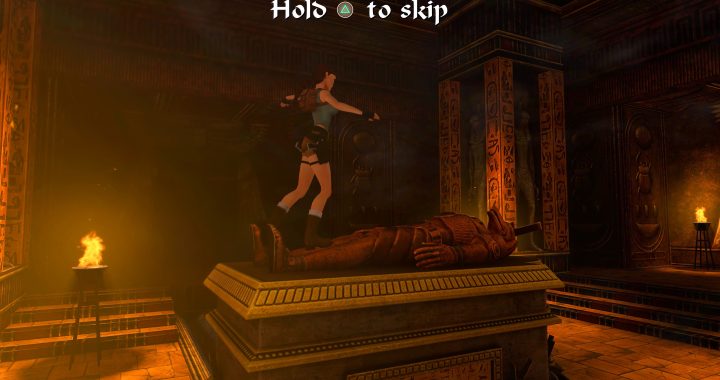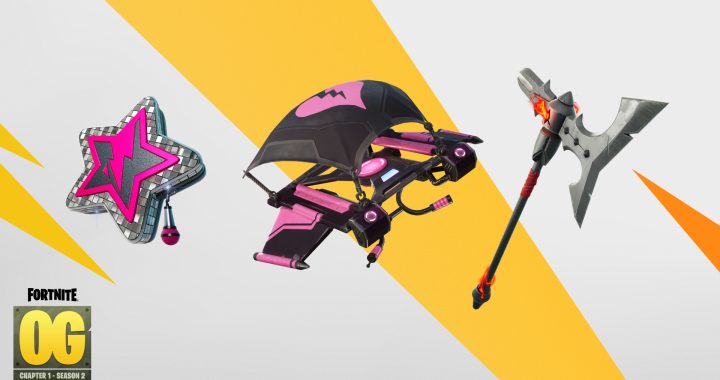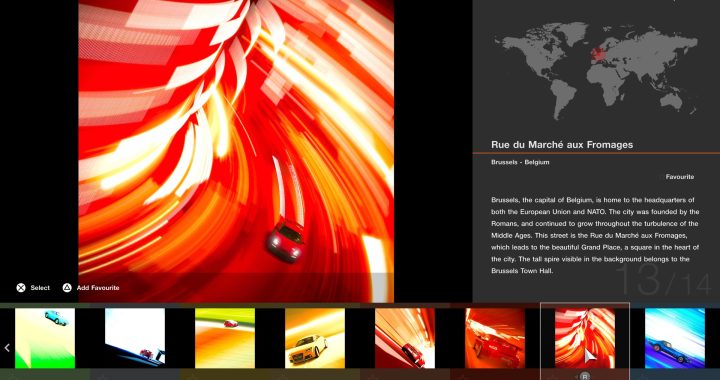MSI X370 Gaming Pro Carbon Review: Racing to the High-end | News and Reviews
Introduction
With AMD getting back in the CPU game with Ryzen, after being absent for almost 5 years, the motherboard market have been flooded with the brand’s X370 and B350 chipsets. In this review, we’ll be taking a look at MSI’s higher-end offering in the X370 chipset, the MSI X370 Gaming Pro Carbon.
The MSI X370 Gaming Pro Carbon is one of the more premium motherboards in MSI’s X370 lineup. Clad in the brand’s established black motif with carbon-fiber accents, the X370 Gaming Pro Carbon screams performance in its sleeve. Before we get into the review, here are the complete specifications of the MSI X370 Gaming Pro Carbon from the brand’s website:
| Processor | Supports AMD® RYZEN series Processors and 7th Gen A-series/ Athlon™ processors for Socket AM4 |
| * This function will be supported depend on the CPU. | |
| Chipset | AMD® X370 Chipset |
| Main Memory | • 4 x DDR4 memory slots, support up to 64GB |
| – Supports DDR4 1866/ 2133/ 2400/ 2667(OC)/ 2933(OC)/ 3200(OC)+ Mhz * | |
| • Dual channel memory architecture | |
| • Supports non-ECC UDIMM memory | |
| • Supports ECC UDIMM memory (non-ECC mode) | |
| * 7th Gen A-series/ Athlon™ processors support up to 2400 MHz only. | |
| Slots | • 2 x PCIe 3.0 x16 slots (PCIE_2, PCIE_4) |
| – RYZEN series processors support x16/x0, x8/x8 mode | |
| – 7th Gen A-series/ Athlon™ processors support x8/x0 mode | |
| • 1 x PCIe 2.0 x16 slot (PCIE_6, supports x4 mode)* | |
| • 3 x PCIe 2.0 x1 slots | |
| * PCI_E6 slot will be unavailable when installing M.2 PCIe SSD in M2_2 slot. | |
| Onboard Graphics | • 1 x DVI-D port, supports a maximum resolution of 1920×1200@60Hz* |
| • 1 x HDMI™ 1.4 port, supports a maximum resolution of 4096×2160@24Hz* | |
| * Only support when using a 7th Gen A-series/ Athlon™ processor. | |
| * Maximum shared memory of 2048 MB | |
| Multi-GPU | • RYZEN series processors |
| Supports 3-Way AMD® CrossFire™ Technology | |
| Supports 2-Way NVIDIA® SLI™ Technology | |
| • 7th Gen A-series/ Athlon™ processors | |
| Supports 2-Way AMD® CrossFire™ Technology | |
| Storage | • AMD® X370 Chipset |
| • 6x SATA 6Gb/s ports* | |
| • 2x M.2 slots (Key M) | |
| – M2_1 slot supports PCIe 3.0 x4 (RYZEN series processors) or PCIe 3.0 x2 (7th Gen A-series/ Athlon™ processors) and SATA 6Gb/s 2242/ 2260 /2280/ 22110 storage devices | |
| – M2_2 slot supports PCIe 2.0 x4 and SATA 6Gb/s 2242/ 2260 /2280 storage devices** | |
| * M.2 and SATA ports combination details please refer user manual. | |
| ** PCI_E6 slot will be unavailable when installing M.2 PCIe SSD in M2_2 slot. SATA3 port will be unavailable when installing the SATA SSD card in M2_2 slot. | |
| RAID | AMD® X370 Chipset |
| • Supports RAID 0, RAID1 and RAID 10 for SATA storage devices | |
| USB | • ASMedia® ASM2142 Chipset |
| – 1 x USB 3.1 Gen2 (SuperSpeed USB 10Gbps) Type-C port on the back panel | |
| – 1 x USB 3.1 Gen2 (SuperSpeed USB 10Gbps) Type-A port on the back panel | |
| • AMD® X370 Chipset | |
| – 4 x USB 3.1 Gen1 (SuperSpeed USB) ports available through the internal USB 3.1 Gen1 connectors | |
| – 6 x USB 2.0 (High-speed USB) ports (2 Type-A ports on the back panel, 4 ports available through the internal USB 2.0 connectors) | |
| • AMD® CPU | |
| – 4 x USB 3.1 Gen1 (SuperSpeed USB) Type-A ports on the back panel | |
| Audio | Realtek® ALC1220 Codec |
| – 7.1-Channel High Definition Audio | |
| – Supports S/PDIF output | |
| LAN | 1x Intel® I211AT Gigabit LAN controller |
| Internal I/O Connectors | 1x 24-pin ATX main power connector |
| 1x 8-pin ATX 12V power connector | |
| 6x SATA 6Gb/s connectors | |
| 2x USB 2.0 connectors (support additional 4 USB 2.0 ports) | |
| 2x USB 3.1 Gen1 connectors (support additional 4 USB 3.1 Gen1 ports) | |
| 1x 4-pin CPU fan connector | |
| 1x 4-pin water-pump-fan connector | |
| 4x 4-pin system fan connectors | |
| 1x TPM module connector | |
| 1x Front panel audio connector | |
| 2x System panel connectors | |
| 1x Chassis Intrusion connector | |
| 1x Clear CMOS jumper | |
| 1x 4-pin RGB LED strip connector | |
| Back Panel I/O Ports | 1x PS/2 keyboard/ mouse combo port |
| 2x USB 2.0 Type-A ports | |
| 1x DVI-D port | |
| 1x HDMI™ port | |
| 4x USB 3.1 Gen1 Type-A ports | |
| 1x LAN (RJ45) port | |
| 1x USB 3.1 Gen2 Type-A port | |
| 1x USB 3.1 Gen2 Type-C port | |
| 5x OFC audio jacks | |
| 1x Optical S/PDIF OUT connector | |
| Dimension | 12 in. x 9.6 in. (30.5 cm x 24.4 cm) |
| ATX Form Factor |
We won’t dwell too much on the unboxing as the MSI X370 Gaming Pro Carbon has your conventional accessories included, namely: SATA Cables, documentation, an I/O shield, RGB extension, SLI bridge, and stickers. Nothing out of the ordinary.
Before we get into the review, let’s have a quick rundown of AMD’s new AM4 platform.
Courtesy of AMD.
Meant to house their new Ryzen CPUs, the AM4 platform was co-developed by ASMedia. It currently consists of five chipsets (two of which are available in the market) that’s meant to be paired with the new 1331 socket. This new socket still uses PGA (Pin Grid Array) instead of LGA (Land Grid Array), which means that the pins are still connected to the CPU instead of the motherboard which Intel has been using for many years now.
Aside from Ryzen, AMD’s soon-to-be-released Raven Ridge APUs can also be used with the AM4 chipset, which is why we’re seeing display ports on some AMD motherboards even if the current Ryzen CPUs doesn’t have any on-die GPUs
As expected, the brand new chipset supports high-end features such as NVMe PCIe 3.0 x4, SATA III, SATA Express, Dual Channel DDR4, native USB 3.1 Gen2, and more. Check out AMD’s table below to see how each chipset compares with one another.
Courtesy of AMD.
Apart from high-end features, the AM4 platform also uses a different heatsink mounting system compared to the old AM3 platform. The bolt-through mounting system has been widened to house the 1331 socket. Mounting clip-style coolers on the motherboard, however, should not pose any problems. Coolers with their own mounting system will have problems. You might need to purchase another cooler or contact your heatsink brand to check if they can send you an AM4-compatible mount.
Now that’s out of the way, let’s take a look at the MSI X370 Gaming Pro Carbon.
Up Close with the MSI X370 Gaming Pro Carbon
Much like most of the Gaming Pro Carbon series motherboards of MSI, the X370 version of the lineup comes with the brand’s trademark carbon-fiber pattern. Overall, the design of the motherboard is black with silver accents, which will surely suit any kind of rig you’re thinking of building.
RGB is a selling point of the MSI X370 Gaming Pro Carbon. Thus, the MSI logo, the I/O shroud, the rear, and the front of the motherboard are all RGB-capable. All lighting effects can be controlled through the MSI Gaming App.
For storage, the MSI X370 Gaming Pro Carbon sports six SATA III ports. Unfortunately, two of the SATA ports are facing the front of the motherboard instead of facing the side.This may lead to less than stellar cable management if you’re going to use all the SATA ports.
Two M.2 slots are available near the PCIe slots. The top M.2 slot uses MSI’s M.2 shield, which has received some flak due to reports of actually trapping heat instead of helping cool the M.2. But that’s an argument for another day. It’s nice that MSI has included two M.2 slots with the X370 Gaming Pro Carbon since it enables usage of more than one M.2 storage devices.
The X370 Gaming Pro Carbon uses an 8+2 phase configuration for its VRM. It should deliver clean and decent power to the CPU in both stock and overclocked configurations.
The area around the VRMs is devoid of any obstructions. This means that installing large coolers should be easy. The 4 RAM slots at the side are reinforced to avoid any accidental damage if you have a habit of yanking your RAM out of the motherboard. They support up to 64GB of DDR4 RAM at speeds of up to 3200MHz
The audio of the X370 Gaming Pro Carbon is provided by an ALC1220 codec that’s shielded as well as isolated from the rest of the motherboard to provide cleaner audio.
The X370 Gaming Pro Carbon is SLI/Crossfire compatible. The top two PCIe 3.0 x16 slots are reinforced to prevent any big cards bending the slots. Since this is board uses the X370 chipset, the top-most PCIe 3.0 slot will run on x16 if only a single card is installed. Otherwise, using 2-way SLI/Crossfire on the top two PCie 3.0 x16 slots will run on x8/x8. Note that the bottom slot is only PCIe 2.0 x16 slot only runs at x4 provided by the X370 chipset and will be deactivated if an a drive is installed on the second M.2 slot. For good measure, MSI has also provided three PCIe 2.0 x1 slots for older hardware such as PCIe sound cards.
At the rear are one PS/2 combo port, two USB 2.0 Type-A ports, one DVI-D port, one HDMI port, four USB 3.1 Gen1 Type-A ports, two USB 3.1 Gen2 ports (Type-A and Type-C), an Ethernet port, five gold-plated audio jacks, and one S/PDIF connector.
It’s worth noting that the two USB 2.0 Type-A ports are dedicated for VR as they have been connected to MSI’s VR Boost to remove any input lag when playing VR games.
The only gripe we have with the board is the missing Q-LED Post Code reader. It’s a missed feature whenever your overclocking settings go bad or if you’re trying to check why your PC won’t boot.
BIOS and Software
The MSI X370 Gaming Pro Carbon still uses the brand’s CLICK BIOS 5 for its UEFI. It’s fairly user-friendly and easy to navigate. Inexperienced users can use the UEFI’s Easy Mode for a fairly automated experience. For more experience users, however, can delve in to the Advanced Mode where they can tweak the CPU, RAM Timings, and other features of the motherboard. Since the CLICK BIOS 5 is also being used on their Intel motherboards, both systems are the same. The only difference between the two is the color scheme and Intel’s XMP has been changed to “A-XMP” on the X370 board.
MSI has also bundled their software suit with the X370 Gaming Pro Carbon, which includes the MSI Dragon Eye, Gaming Lan Manager, MSI Command Center, MSI Gaming App, MSI Live Update 6, MSI Ram Disk, MSI X-Boost, and Nahimic 2. This means that you can further customize the performance of your system within Windows.
System, Overclocking, and Benchmarks
We equipped the MSI X370 Gaming Pro Carbon with the following components to see how it will perform in the field:
- CPU: AMD Ryzen 7 1700
- RAM: 16GB DDR4 RAM at 2667MHz, 16-18-18-18-32
- GPU: NVIDIA GeForce GTX 1070 Founders Edition (NVIDIA 384.76 Driver)
- PSU: Seasonic G650 80+ Gold
- Storage: Plextor S1 256GB SATA SSD
- Cooler: Deep Cool Gammaxx 400
- OS: Windows 10 Pro
- BIOS version 7A32v17
We were able to overclock the AMD Ryzen 7 1700 to a decent 3.9GHz at 1.4v, 200MHz more than the stock turbo of 3.7GHz. Unfortunately, we were unlucky with the silicon lottery as our sample wasn’t able to break the 4.0GHz barrier even on higher voltages.
Well, let’s get on with the benchmarks:
Conclusion
Priced around PhP 11,000, the MSI X370 Gaming Pro Carbon is a well-equipped and all-around decent performer. The inclusion of dual M.2 slots is sure to pull some customers as it presents more fast storage options for users. Meanwhile, audiophiles will surely appreciate the ALC1220 codec for cleaner audio and with the help of the Nahimic 2 software; users will be able to further customize their audio experience. Of course all the standard-fare features such as RGB support and USB 3.1 ports also add to the overall attractiveness of the motherboard.
In terms of overclocking, we were able to get a decent overclock out of our AMD Ryzen 7 1700. It’s a shame that we weren’t able to push the CPU any further due to our unlucky draw in the silicon lottery. But that was no way the motherboard’s fault.
With all these in mind, we believe that the MSI X370 Gaming Pro Carbon is one hell of a motherboard despite the missing Q-LED Post Code reader. With its uncluttered design, RGB support, decent overclocking performance, and dual M.2 slots, this motherboard should be on your short-list if you’re ever in need of a motherboard for your Ryzen build.
 On February 14th, Tomb Raider IV-VI Remastered unveiled the new Flyby Camera Maker.
On February 14th, Tomb Raider IV-VI Remastered unveiled the new Flyby Camera Maker.  Discuss of the Week: Waterfall
Discuss of the Week: Waterfall  Fortnite OG Chapter 1 Time 2 reaches the previous in full force, survive.
Fortnite OG Chapter 1 Time 2 reaches the previous in full force, survive.  Gran Turismo 7 Release 1.55 information revealed, sit now
Gran Turismo 7 Release 1.55 information revealed, sit now  No Man’s Fox’s latest release introduces billions of new stars, planets, and more immediately
No Man’s Fox’s latest release introduces billions of new stars, planets, and more immediately  Introducing MLB The Show x Homage clothing relationship
Introducing MLB The Show x Homage clothing relationship